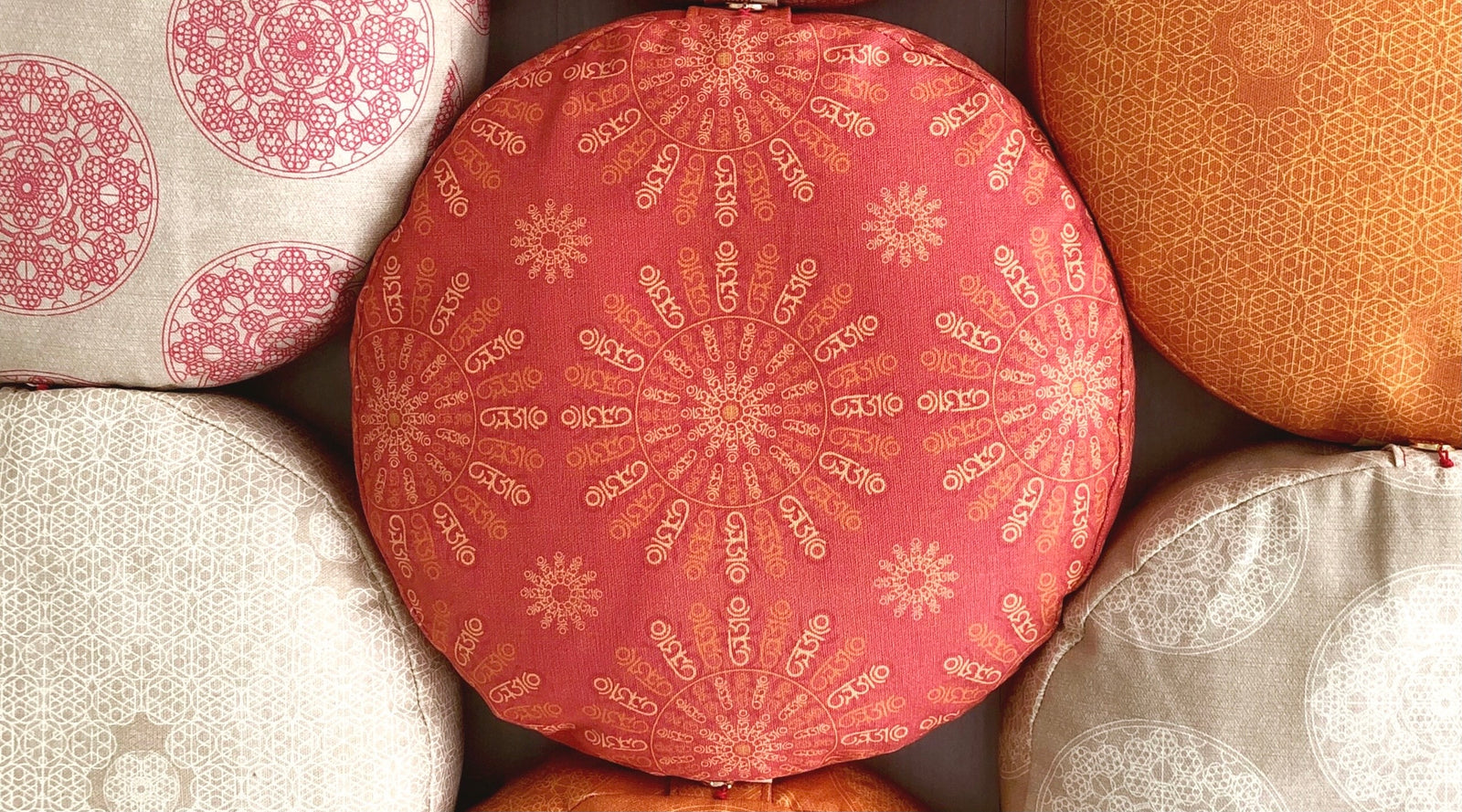Your Cart is Empty
FREE SHIPPING within CANADA FOR ALL ORDERS OVER $175. We are sorry to say we are no longer shipping to the U.S.

The more you practice mindfulness of your senses, the more your senses will be heightened. Your perspective on your practice and even on everything around you will shift.
Today, I invite you to intentionally tune into your sense of sight and to make it a meditation…a mandala meditation!
For centuries, mandalas have been used to create order and balance out of chaos and disruption, and as a way to connect with the sacred and higher purpose of life. Mandalas were powerful in the ancient world and are still powerful for the modern world. We can use them in our own practice as a tool for meditation and contemplation, as a way to find peace and calm. And to connect with our inner wisdom.
The word “mandala” -मण्डल - is a Sanskrit word for “circle”. From its roots “manda” and “la” means “container of essence”, a sacred circle embodying some sacred essence within.
The mandala is a circular configuration of geometric forms and images, organized in a symmetrical manner radiating out from a central focal point. It’s most well known as a sacred symbol and a contemplative art form that is particularly important in Buddhist and Hindu traditions. It may be considered a symbolic map of the Universe. And it's a visualization tool that can be used to direct your mind from the outside of the circle (outer experience) toward the centre (self) on a deep reflection of the meaning of life. Many mandalas have 4 gates representing the 4 directions. And this journey into the mandala begins in the east, through the eastern gate.
The purpose of the journey to the centre of the mandala is to encourage introspection and ultimately an understanding of our individual place in the world. So that we can find peace of mind and a state of calm.
Find a mandala image as a focus for today’s practice, a one pointed focus meditation, to learn how to soften your gaze and journey inwards. You can DOWNLOAD a PDF with the HUM MANDALAS and a few other examples. Or you can get creative and draw your own mandala or make a natural mandala.
FIND A FEW MINUTES TO MEDITATE ON A MANDALA! HERE’S HOW…
GO DEEPER
Discover more about mandalas, how ancient sacred circles can be a source of balance, harmony and inner peace for your modern life on the HUM Life blog: MANDALAS: JOURNEYS THROUGH THE SACRED CIRCLE.
THE HUM MANDALAS
Everything HUM is designed with love, intention, and a careful attention to the tiniest detail. The beautiful and meaningful patterns you see on the fabrics of our meditation cushions and yoga bolsters are the unique language of HUM. They have been specifically created to subtly support your practice with patterning on pattern, message inside message—sacred geometry and the resonant treatment of our mantra, our word - HUM - in vibrant mandalas.

Comments will be approved before showing up.